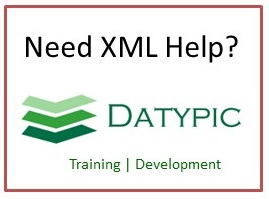InventoryBalanceType
The Status indicates whether an item is active, inactive, or in other various states. Examples of values for this field include: Active, Inactive, Hold, Deleted, Obsolete
Complex type information
Namespace: http://www.openapplications.org/oagis/10
Schema document: Common.xsd
Properties: ID: oagis-id-a3d67f2e87e94542874bc4f5d0798c14
Content
- Sequence [1..1]
- GLEntityID [0..1] A G/L entity is the smallest organizational unit for which individual financial statements must be drawn up according to relevant commercial law. It is normally the primary balancing segment of the GL Account structure. Typically, this is the owning entity for the transaction. Synonyms are Business Unit, Fund, G/L Company, Joint Venture, Non-Profit Association Name
- Facility [0..*] A Facility identifies a location within an entity. The facility may have sub-locators identified using a sequenced identification notation e.g. Warehouse A100 Sub-Location 11, Row R10 would be represented as an array of three Facility elements with values as A100, 11, R10, name attribute as Warehouse, Sub-Location and Row and sequence attribute as 1,2 and 3 respectively.
- Status [0..1] Indicates the status of the associated object by providing the Status Code along with a description and when the status is effective.
- ReasonCode [0..*] Identifies the reason for an activity
- TransactionDateTime [0..1] The datetime of occurence of the transaction
- AvailableQuantity [0..1]
- InspectedQuantity [0..1] Number of inventory items that have been inspected.
- AllocatedQuantity [0..1] Number of inventory items that have been allocated for other uses as such are no longer availble. Unless the allocation is overriden.
- BlockedQuantity [0..1] Number of inventory items that are blocked or unavailable.
- StorageUOMCode [0..1] This is the storage unit of measure of the item. This is sometimes different from the unit of measure that is used to count a product as it is consumed, sold or accounted for
- ValueClassification [0..1] Is a grouping used to determine the General Ledger accounting effect. These are user defined values, with the exception of the values TOTAL, MATERIAL, LABOR, BURDEN, OVERHEAD, SUBCONTRACT.
- DensityConversionFactorNumber [0..1] The density factor is a simple field with a numeric value that enables a conversion rate to the standard density of a liquid
- CatchWeightQuantity [0..1] This is the actual weight of the ReceivedQuantity for the Item if the NetWeightQuantity cannot be calculated precisely via arithmetic because the goods do not have a consistent per unit weight. This quantity is generally used with the CatchWeightConversion Factor.
- CatchWeightConversionFactorNumber [0..1] The catch weight conversion factor is a stock keeping conversion factor for inventory goods. This is a special conversion factor for when the units of measure can not be converted using arithmetic. This conversion factor is used with the CatchWeightQuantity. Examples of the use of this factor include: Number of Chickens to a Box Number of units of a chemical in a barrel
- ActualTemperature [0..*] Is the actual temperature taken at periodic times.
- ProductionOrderReference [0..*] Is reference to a ProductionOrder
- SalesOrderReference [0..*] Is a reference to a SalesOrder
- DocumentReference [0..*]
- Attachment [0..*] The Attachment represents binary data files that may be included within a BOD. These files replace the paper specifications and drawings attached to a BOD definition to clearly communicate design requirements. This Data Type is optional. Attachment usage is further defined by its position.
- WarehouseParty [0..1]
- CarrierParty [0..*] Identifies the party that serves as the carrier of the goods or services for the transaction.
- SupplierParty [0..*] Identifies the supplier organization/entity of the items or inventory for the associated transaction. In most cases there is one SupplierParty per transaction. i.e. one SupplierParty for a given PurchaseOrder. However in the cases where an transaction Broker is involved there are cases where a single transaction may have different SupplierParties at the line level or in the case of a Catalog for the Catalog.
- Party [0..*] A generic Party for non-validated or application-validated parties. A work-around for situations where Schema-validation of Parties is not feasible or not desired.
- Extension [0..1] Allows the user of OAGIS to extend the specification in order to provide additional information that is not captured in OAGIS.This is done by defining the additional information in XML Schema and referencing the new schema in the xml instance document through the use of namespaces. Once this is done the additional information defined there can be carried in the BOD XML instance document.The Open Applications Group will make best efforts to quickly consider all proposed submissions.The Extension is always the last element in all components, except where the component has been extended inline.
from type IdentificationTypefrom type InventoryBalanceBaseTypefrom group InventoryTransactionGroupfrom group ReferencesGroup
Attributes
| Name | Occ | Type | Description | Notes |
|---|---|---|---|---|
| typeCode | [0..1] | CodeType_1E7368 | from type IdentificationType | |
| actionCode | [0..1] | ActionCodeContentType | from type IdentificationType |
Used by
- Element InventoryBalance
Type inheritance chain
- IdentificationType
- InventoryBalanceBaseType
- InventoryBalanceType
- InventoryBalanceBaseType



